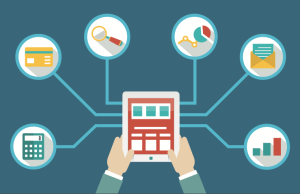 Tips to simplify the sending and receiving of payments for better client satisfaction and better cash flow
Tips to simplify the sending and receiving of payments for better client satisfaction and better cash flow
The potential benefits of electronic invoicing include lower costs associated with printing, paper, postage and the storage of hard copies. Because electronic invoicing reaches your clients more immediately, there’s also the potential that you’ll receive payment faster. But electronic invoicing can become a confusing and time-consuming endeavor if it’s not done properly.
Here are some simple tips that ensure you’re doing electronic invoicing the right way.
Plan for the features you need (and want)
The more effort you put into preparing for the transition to electronic invoices, the less “hiccups” you’ll experience in your own internal processes, and the adjustment required of your vendors. Make a list of all the invoice specifications your current clientele requires, including how you’re required to reference goods or services being billed, the ability to apply volume discounts, and add, remove, or adjust certain tax rates and payment policies. You can use invoice templates to assist you, before you determine which electronic invoicing system best suits your business.
Ensure that any new electronic invoice you produce can ultimately be saved and delivered to the client in their preferred file format, too. Additionally, consider whether there are opportunities to improve your current system. For example, some electronic invoicing systems are equipped to “talk” to other electronic bookkeeping tools to reduce entry errors. Others may provide the option to link to a bank account to confirm when electronic payments are received.
Learn the new system before you invoice
Once you choose an electronic invoice system and establish clients in it, send a “trial run” of each client’s electronic invoice to yourself. Confirm that the electronic invoice information is structured as you intend, including the placement and appearance of your business logo, and that email delivery clearly indicates an invoice is attached, in the subject line and the in the message itself. Print each copy to ensure that margins and spaces are placed appropriately. Review how to manage settings on your electronic invoices, including those that signal an invoice has been received, or is overdue, and how to leverage efficiencies like recurring billing.
Notify your clients of the change
At least a month before the transition, notify your direct point of contact and the client’s accounting department of the change. Remember that your process change could also impact their payment process; be respectful of any issues you may create on the invoice recipient’s end.
Consider how you might eliminate “pain points”
Once you learn how to manage the basic features of electronic invoicing, explore ways you might further simplify invoices and payment receipt. For example, some electronic invoice systems automatically notify customers when invoices are past due, or allow them the option to pay invoices in new ways — including with a credit card. Many electronic invoice systems can also help you track emails to know when or if a client received and opened your electronic invoice message, so you can proactively facilitate timely processing.
Keep a human connection in an electronic world
Studies show that the polite language you use on your invoices — including those processed electronically — can determine how quickly you are paid. Thank a client for their business on every invoice, and include a simple sentence (with the word “please”) expressing that you appreciate timely payments.
Organize a system for reliable file storage
Arrange for secure and reliable storage, retrieval and archiving methods for your electronic invoices and the older hard copies you have in storage. Whether you choose to house your files in the cloud, or by some other Web-based electronic backup method, ensure that you and your staff can easily access current and past invoice records.
Electronic invoicing can simplify the process of sending and receiving payment, but like any business function, going about it the wrong way can introduce more headaches, reducing efficiency. By taking the time to learn the new electronic invoicing system well in advance of the transition, and establishing new and consistent processes, you can streamline administrative efforts and, ideally, improve your cash flow.




Thanks for sharing useful information. My business beginning period, I step downed in maintain invoices. On that time one of my friends suggest to try invoice software. Then I tried a free trial of some tool afterwards I switched with the invoice that completely fits my business. I’ve been using Apptivo, it features can reduce working time on managing invoice and also available in mobile devices.